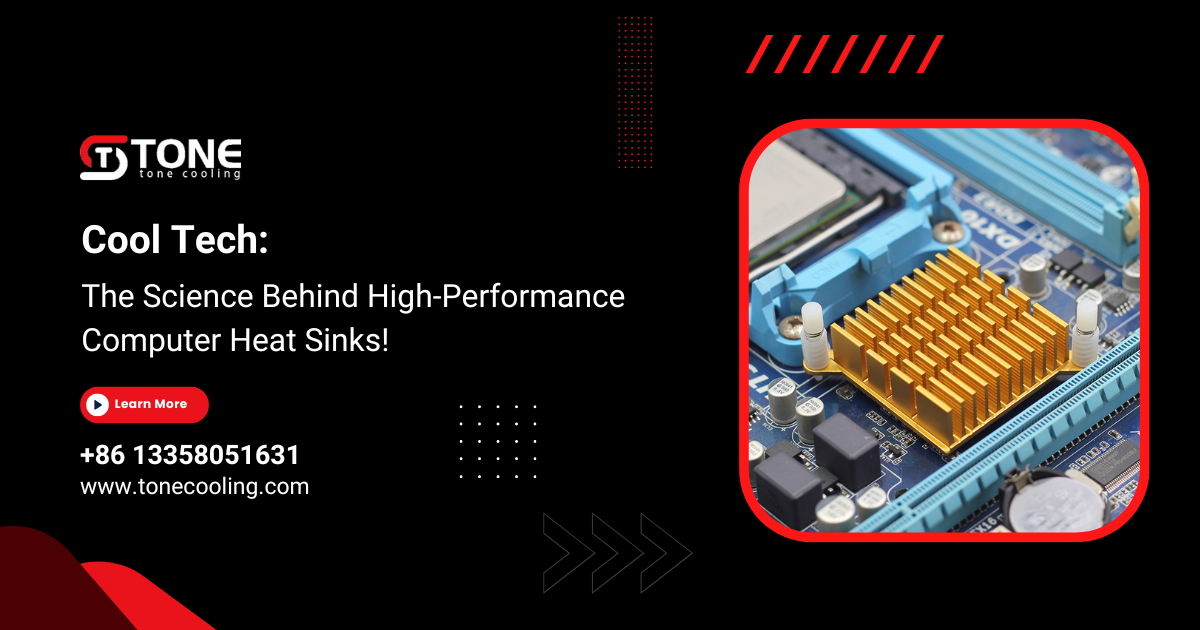Notifications

11 minutes, 12 seconds
-39 Views 0 Comments 0 Likes 0 Reviews

In the fast-paced world of computing, where processors churn through billions of calculations per second, heat is an unavoidable byproduct. As CPUs and GPUs become increasingly powerful, managing the thermal load is more crucial than ever to maintain performance and longevity. This is precisely where the computer heat sink plays a vital role. Though it might seem like a simple piece of hardware, the science behind heat sinks is both fascinating and essential for anyone who cares about keeping their PC running cool and efficiently.
At Tone Cooling Technology Co., Ltd., we understand that an efficient cooling solution isn’t just about slapping a metal block onto your processor; it’s about precision engineering, material science, and innovative design. Heat sinks have evolved tremendously, enabling modern computers to perform at peak levels without throttling or overheating.
At its core, a computer heat sink is a passive cooling device designed to draw heat away from critical components like the CPU or GPU and dissipate it into the surrounding air. Heat sinks are typically made of metals with high thermal conductivity, such as aluminum or copper. Their structure includes numerous fins or ridges that increase the surface area available for heat dissipation.
Think of a heat sink as a heat sponge that absorbs energy from a hot processor and then spreads it out over a large surface area so that the heat can transfer to the air more efficiently. Without this critical component, your CPU would quickly overheat, resulting in reduced performance or even permanent damage.
Understanding how a computer heat sink works requires diving into the fundamentals of heat transfer, which happens through three main processes: conduction, convection, and radiation.
By optimizing these three processes, high-performance heat sinks manage to maintain lower CPU temperatures, enabling faster and more stable operation.
When selecting materials for computer heat sinks, thermal conductivity is king. Copper leads the pack with its superior ability to conduct heat, about twice as effective as aluminum. However, copper is heavier and more expensive, which is why many heat sinks use aluminum fins combined with a copper base for an ideal balance.
Aluminum’s lower density makes it easier to manufacture complex fin shapes, which maximize surface area without adding excessive weight. Moreover, modern manufacturing techniques allow companies like Tone Cooling Technology Co., Ltd. to design heat sinks that capitalize on the strengths of both metals, resulting in efficient yet cost-effective cooling solutions.
Gone are the days when heat sinks were just simple blocks of metal. Today’s high-performance heat sinks feature advanced design elements to improve heat dissipation:
Each of these innovations pushes the boundaries of what a computer heat sink can do, enabling today's CPUs to operate at peak performance without overheating.
While heat sinks are passive devices, they often work in tandem with fans to accelerate heat dissipation through forced convection. This combination is what you typically find in air cooling solutions.
The fan blows cooler air over the heat sink’s fins, speeding up the transfer of heat into the air and out of the system. The size, speed, and placement of fans all influence cooling efficiency and noise levels. Brands like Tone Cooling Technology Co., Ltd. carefully engineer these systems to strike a perfect balance between silent operation and maximum cooling.
Though air cooling with heat sinks and fans remains popular due to its reliability and ease of installation, liquid cooling solutions have gained traction for their superior thermal management. However, even in liquid cooling setups, computer heat sinks (or cold plates) remain essential as the interface between the CPU and the coolant.
Liquid cooling can remove heat more effectively from the CPU, but without a well-designed heat sink or cold plate, that heat wouldn't efficiently transfer into the liquid coolant. This synergy between liquid and solid components underscores the continuing importance of advanced heat sink technology in all cooling paradigms.
Poor cooling leads to high CPU temperatures, which can cause the processor to throttle performance to prevent damage. This throttling results in slower processing speeds and a less responsive PC, frustrating users who demand top-tier performance.
Moreover, sustained high temperatures accelerate wear and tear on electronic components, potentially shortening the lifespan of your system. A high-quality computer heat sink mitigates these risks by keeping temperatures within safe operating ranges, ensuring both performance and durability.
At Tone Cooling Technology Co., Ltd., innovation meets precision. By leveraging cutting-edge materials science and manufacturing techniques, they produce high-performance heat sinks tailored to the needs of gamers, professionals, and industrial users alike.
With a focus on durability, efficiency, and aesthetic appeal, their products often feature advanced designs like vapor chambers and custom microfin arrays. These heat sinks not only cool effectively but also integrate seamlessly into modern PC builds, enhancing both performance and style.
The humble computer heat sink is much more than just a piece of metal. It’s a sophisticated piece of technology that plays a vital role in the performance and longevity of your computer. Through advances in material science, design innovation, and integration with active cooling systems, heat sinks continue to evolve, ensuring that our increasingly powerful computers remain cool under pressure.
Whether you are building a high-end gaming rig or a professional workstation, investing in a high-performance heat sink from trusted companies like Tone Cooling Technology Co., Ltd. can make all the difference in achieving the thermal stability needed for optimal performance.
Q1: What materials are commonly used in computer heat sinks?
A1: Copper and aluminum are the most common materials, chosen for their excellent thermal conductivity and balance between performance and cost.
Q2: Can a computer heat sink work without a fan?
A2: Passive heat sinks can work without fans but are generally less effective than those paired with active airflow, especially under heavy loads.
Q3: What is the difference between a heat sink and a cold plate?
A3: Heat sinks typically dissipate heat into the air, while cold plates are designed to transfer heat to a liquid coolant in liquid cooling systems.
Q4: How often should I clean my computer heat sink?
A4: Regular cleaning every 3-6 months is recommended to remove dust and maintain optimal cooling efficiency.
Q5: Does a bigger heat sink always mean better cooling?
A5: Not necessarily. Design, materials, and airflow play critical roles. A well-engineered smaller heat sink can outperform a bulky but poorly designed one.

